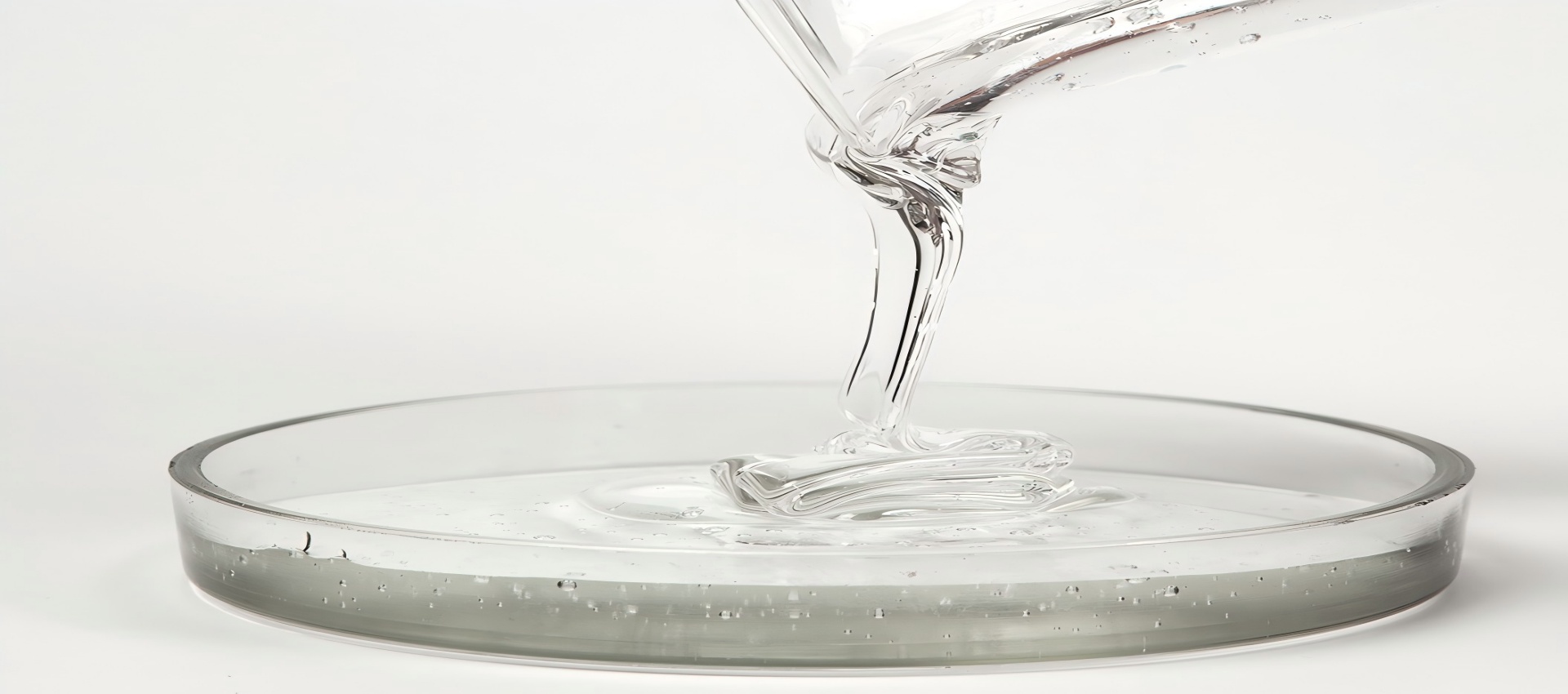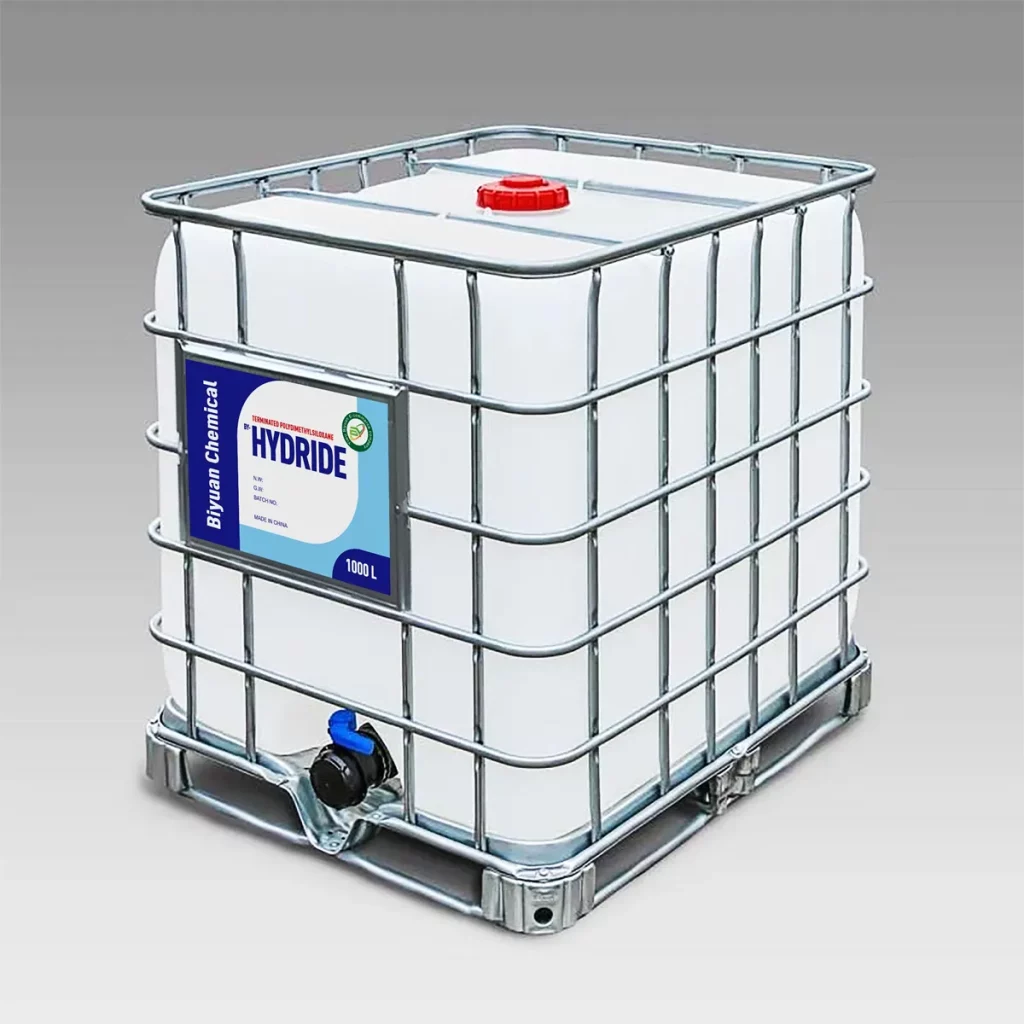
heptamethyltrisiloxane factory&supplier

Heptamethyltrisiloxane
Everything you need to know about our products and company
Basic Product Information
TYPICAL PROPERTIES
| Appearance | colorless transparent liquid |
| purity (GC),% | >99 |
| Molecular weight | 222.5 |
Physical Properties

Chemical Properties
Product Functions
Application
Core Advantages
| Properties | Core Advantages | Typical Data/Performance | Application Relevance | Properties |
| Chemical Stability | Resistant to acids, alkalis, and oxidation; stable across a broad pH range | Stable under pH 3–11 conditions | Pharmaceutical carriers, electronic encapsulation, industrial coatings | Chemical Stability |
| Thermal Stability | Resists decomposition at high temperatures; suitable for high-temperature processes | Thermal decomposition temperature >250°C | High-temperature lubrication, semiconductor encapsulation, heat-resistant coatings | Thermal Stability |
| Low Surface Energy | Provides excellent hydrophobicity and anti-adhesion | Water contact angle >100° | Waterproof coatings, anti-fouling surfaces, release agents | Low Surface Energy |
| Volatility | Rapid volatilization without residue; adjusts system viscosity | Boiling range: 150–200°C (varies by isomer) | Cosmetics, temporary protective coatings, leveling agents | Volatility |
| Compatibility | Highly compatible with organic solvents, resins, and silicone materials | Soluble in toluene, acetone, ethanol, etc. | Compound modification, formulation additives | Compatibility |
| Rheological Adjustment | Reduces system viscosity and improves flowability | Viscosity <10 mPa·s (25°C) | Coatings, inks, injection molding | Rheological Adjustment |
| Safety & Eco-Friendliness | Low toxicity; complies with cosmetic and pharmaceutical standards | FDA 21 CFR 175.300 certification (indirect food contact) | Personal care, medical devices | Safety & Eco-Friendliness |
| Reactivity | Hydrolyzable/condensable siloxane bonds; easily functionalized | Reacts with amino, epoxy groups, etc. | Coupling agent synthesis, nanomaterial modification | Reactivity |
Experimental Data & Case Studies
Pesticide Industry
Coatings Industry
Electronics Industry
Textile Industry
Cosmetics Industry
Usage Guidelines & Precautions
Usage Guidelines
Application: Add as an adjuvant, comprising 0.1–0.5% of total pesticide mass.
Procedure:
Weigh pesticide first.
Add adjuvant.
Mix with water and stir thoroughly.
Example: Add 1–5 mL of adjuvant per 1000 mL pesticide solution.
Application: Incorporate during grinding or paint formulation, at 0.2–2% of total coating mass (adjust based on system requirements).
Example: Add 0.2–2 kg adjuvant per 100 kg latex paint to improve leveling and gloss.
Application: Use as a surface treatment agent via spraying, dipping, or brushing.
Example: For PCB demolding, prepare a 1–5% solution, dip the board for seconds, then air-dry.
Methods:
Pad-Dry Method: Immerse fabric in a finishing bath containing 0.5–3% adjuvant, pad, then dry.
Coating Method: Apply finishing agent to fabric surface and dry.
Example: Use 1–2% concentration for cotton fabric treatment.
Application: Add during emulsion preparation at 0.5–3% of total formulation.
Example: Incorporate 0.5–3 kg adjuvant per 100 kg lotion/cream during emulsification.
Precautions
Store in a cool, ventilated area (<30°C), away from ignition sources and heat.
Keep containers sealed to prevent moisture absorption and thermal degradation.
Flammable – Keep away from open flames, heat, and strong oxidizing agents.
Ensure adequate ventilation in work areas to avoid vapor accumulation.
Wear PPE (gloves, goggles); rinse immediately with water if contacted and seek medical help.
Test compatibility before mixing with other chemicals.
Avoid reactions with strong acids/bases in pesticides or coatings.
Strictly follow recommended dosages.
Overuse may cause phytotoxicity (pesticides) or compromise stability/safety (cosmetics).
Packaging & Ordering
Packaging: 200kg/1000kg plastic drums (customizable).
Our most popular products loved by customers worldwide
Heptamethyltrisiloxane is emerging as a transformative functional material in the pharmaceutical industry. This volatile silicone derivative combines low viscosity with high permeability, offering unique solutions for advanced drug delivery systems and medical device technologies. Certified USP Class VI and compliant with ISO 10993-5 standards, heptamet.
Heptamethyltrisiloxane is transforming the personal care industry through its unique volatile characteristics and exceptional spreading properties. This lightweight silicone fluid delivers instant sensory enhancement while providing functional benefits across various product categories. Heptamethyltrisiloxane meets rigorous safety standards including RE.
Heptamethyltrisiloxane is emerging as a powerful adjuvant in modern agriculture, leveraging its unique properties to enhance crop protection product performance. This organosilicone compound acts as a super-spreader, dramatically improving the efficacy of pesticides, herbicides, and fungicides through superior surface coverage and penetration. The mater.
Heptamethyltrisiloxane is gaining recognition as a versatile performance additive in various industrial sectors due to its unique combination of low viscosity, high volatility, and exceptional surface activity. This organosilicone compound serves as an efficient process aid and functional modifier across multiple applications. Heptamethyltrisiloxane off.